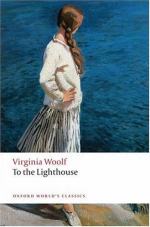|
This section contains 659 words (approx. 2 pages at 400 words per page) |

|
Stream of Consciousness
The narrative technique that Woolf uses for most of To the Lighthouse is normally called stream of consciousness. This technique was a product of Modernism, a literary movement characterized by introspection, self-awareness and an openness to the unconscious. Associated primarily with Woolf and James Joyce, this technique was a way of representing the whole mind of an individual, not just conscious thought. It is based on the psychological theory that human minds are made up of many layers of awareness, from highly articulated rational thought, to emotional responsiveness, all the way to the animal pre-speech level of need and instinct. The basis of the technique is the notion that all of these layers are present in the mind of a human at any given momenta "stream of consciousness" composed of the flow of sensations, thoughts, memories, associations, and reflections. If the exact pattern of the...
|
This section contains 659 words (approx. 2 pages at 400 words per page) |

|




